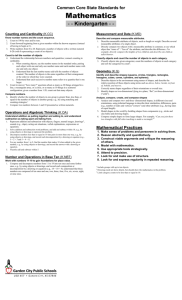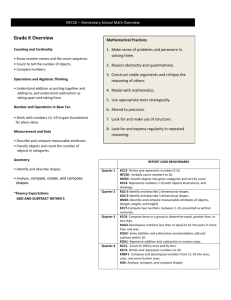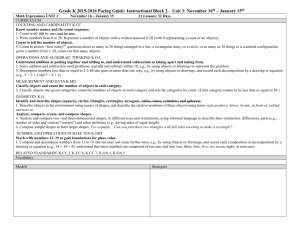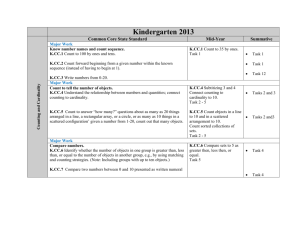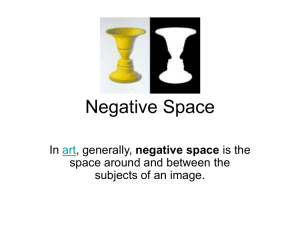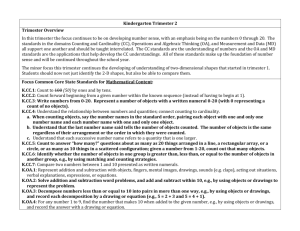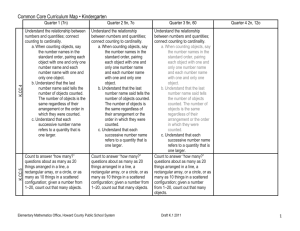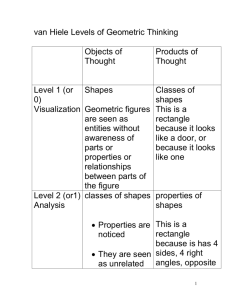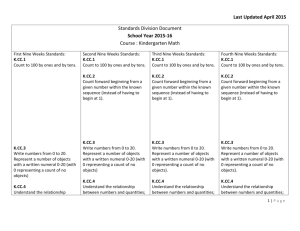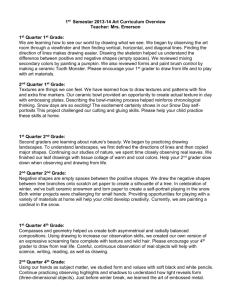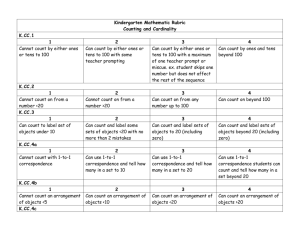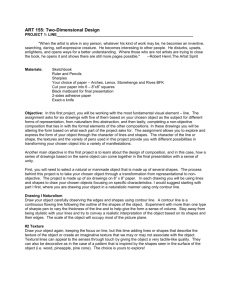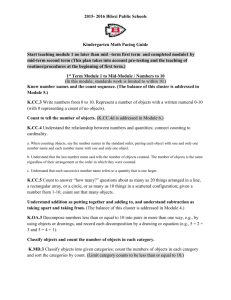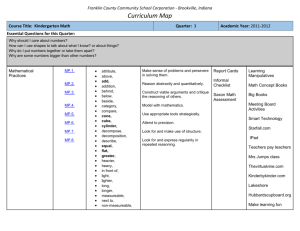K.OA.3: Decompose numbers less than or equal to 10 into pairs in
advertisement
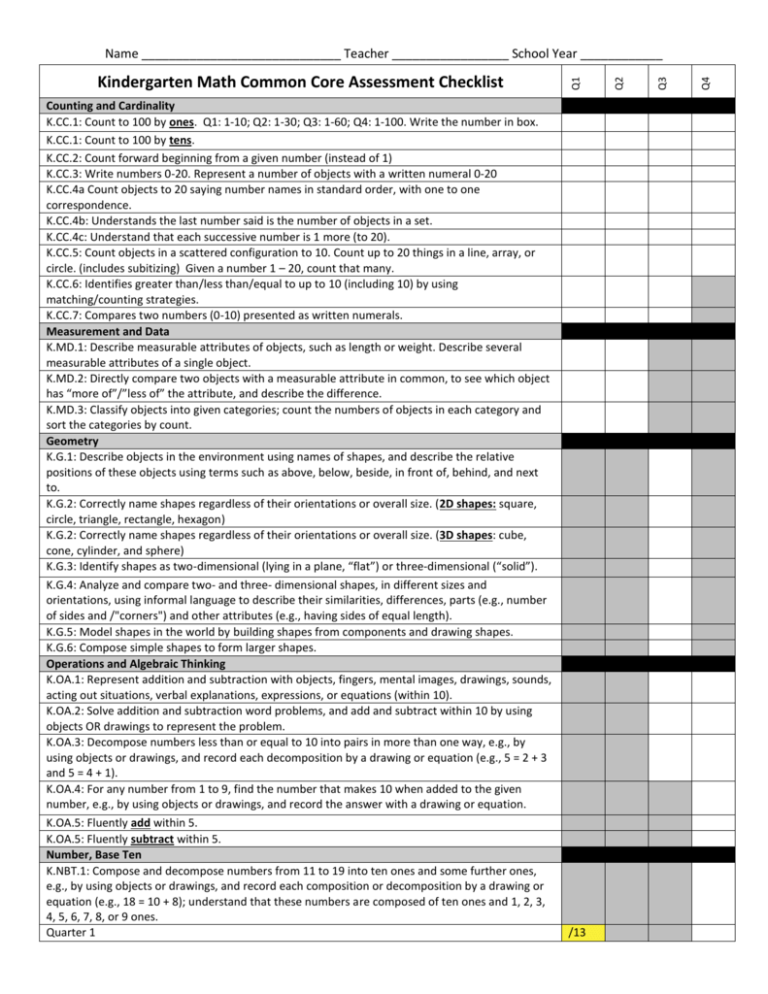
Q4 /13 Q3 Counting and Cardinality K.CC.1: Count to 100 by ones. Q1: 1-10; Q2: 1-30; Q3: 1-60; Q4: 1-100. Write the number in box. K.CC.1: Count to 100 by tens. K.CC.2: Count forward beginning from a given number (instead of 1) K.CC.3: Write numbers 0-20. Represent a number of objects with a written numeral 0-20 K.CC.4a Count objects to 20 saying number names in standard order, with one to one correspondence. K.CC.4b: Understands the last number said is the number of objects in a set. K.CC.4c: Understand that each successive number is 1 more (to 20). K.CC.5: Count objects in a scattered configuration to 10. Count up to 20 things in a line, array, or circle. (includes subitizing) Given a number 1 – 20, count that many. K.CC.6: Identifies greater than/less than/equal to up to 10 (including 10) by using matching/counting strategies. K.CC.7: Compares two numbers (0-10) presented as written numerals. Measurement and Data K.MD.1: Describe measurable attributes of objects, such as length or weight. Describe several measurable attributes of a single object. K.MD.2: Directly compare two objects with a measurable attribute in common, to see which object has “more of”/”less of” the attribute, and describe the difference. K.MD.3: Classify objects into given categories; count the numbers of objects in each category and sort the categories by count. Geometry K.G.1: Describe objects in the environment using names of shapes, and describe the relative positions of these objects using terms such as above, below, beside, in front of, behind, and next to. K.G.2: Correctly name shapes regardless of their orientations or overall size. (2D shapes: square, circle, triangle, rectangle, hexagon) K.G.2: Correctly name shapes regardless of their orientations or overall size. (3D shapes: cube, cone, cylinder, and sphere) K.G.3: Identify shapes as two-dimensional (lying in a plane, “flat”) or three-dimensional (“solid”). K.G.4: Analyze and compare two- and three- dimensional shapes, in different sizes and orientations, using informal language to describe their similarities, differences, parts (e.g., number of sides and /"corners") and other attributes (e.g., having sides of equal length). K.G.5: Model shapes in the world by building shapes from components and drawing shapes. K.G.6: Compose simple shapes to form larger shapes. Operations and Algebraic Thinking K.OA.1: Represent addition and subtraction with objects, fingers, mental images, drawings, sounds, acting out situations, verbal explanations, expressions, or equations (within 10). K.OA.2: Solve addition and subtraction word problems, and add and subtract within 10 by using objects OR drawings to represent the problem. K.OA.3: Decompose numbers less than or equal to 10 into pairs in more than one way, e.g., by using objects or drawings, and record each decomposition by a drawing or equation (e.g., 5 = 2 + 3 and 5 = 4 + 1). K.OA.4: For any number from 1 to 9, find the number that makes 10 when added to the given number, e.g., by using objects or drawings, and record the answer with a drawing or equation. K.OA.5: Fluently add within 5. K.OA.5: Fluently subtract within 5. Number, Base Ten K.NBT.1: Compose and decompose numbers from 11 to 19 into ten ones and some further ones, e.g., by using objects or drawings, and record each composition or decomposition by a drawing or equation (e.g., 18 = 10 + 8); understand that these numbers are composed of ten ones and 1, 2, 3, 4, 5, 6, 7, 8, or 9 ones. Quarter 1 Q2 Kindergarten Math Common Core Assessment Checklist Q1 Name _____________________________ Teacher _________________ School Year ____________ Quarter 2 Quarter 3 Quarter 4 % /13 % /13 % /13 % /13 % /13 % /13 % /20 % /20 % /15 %

